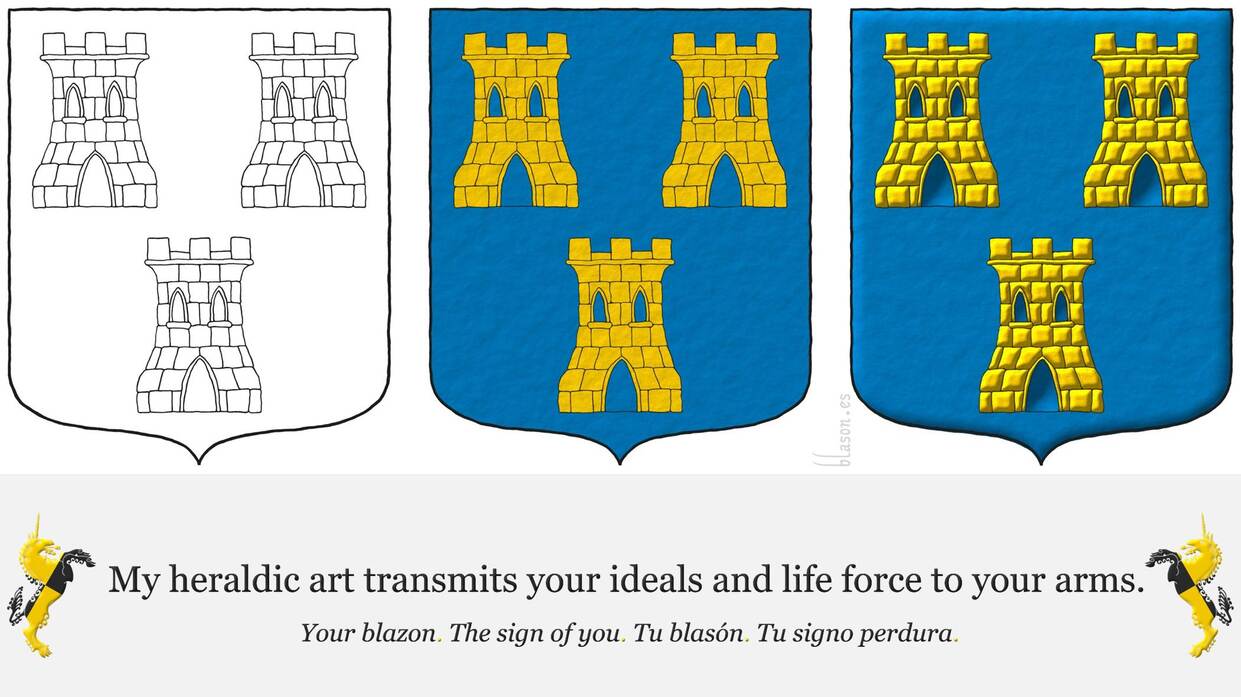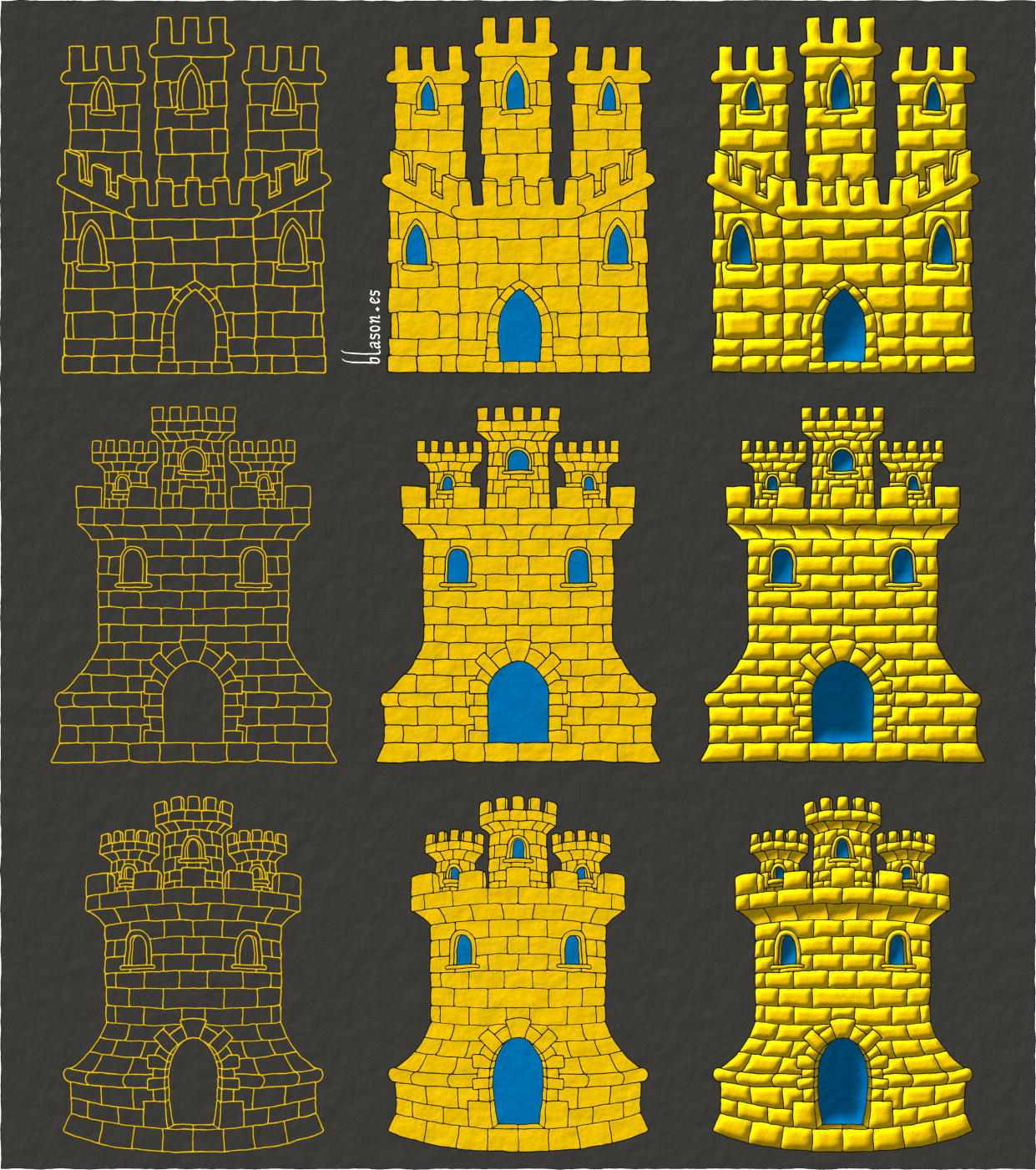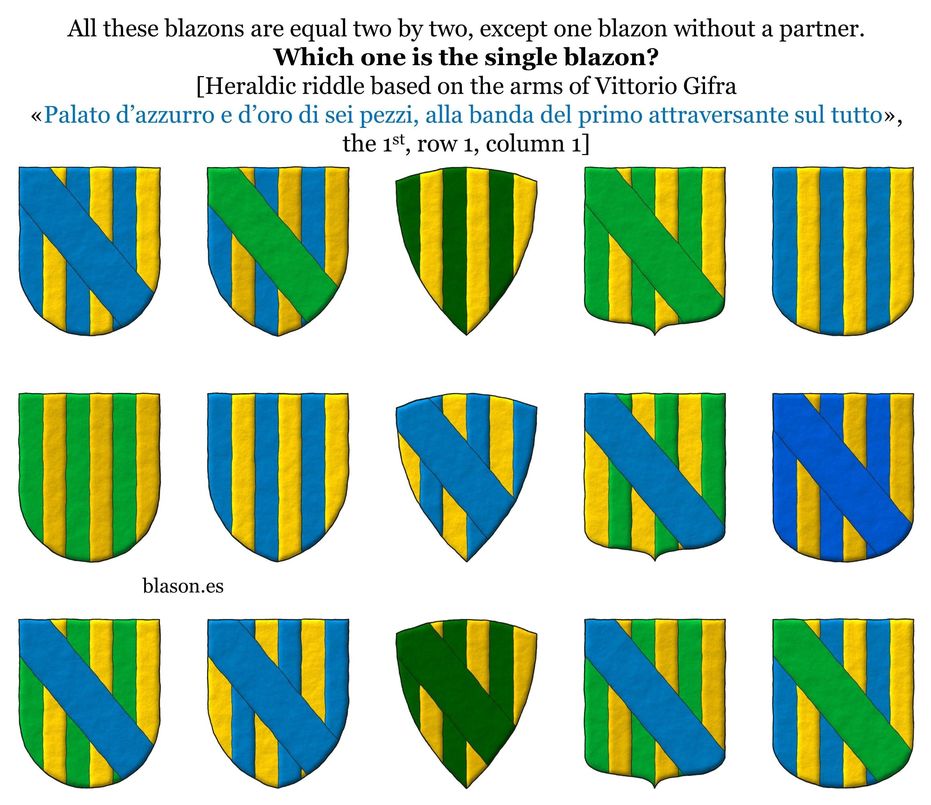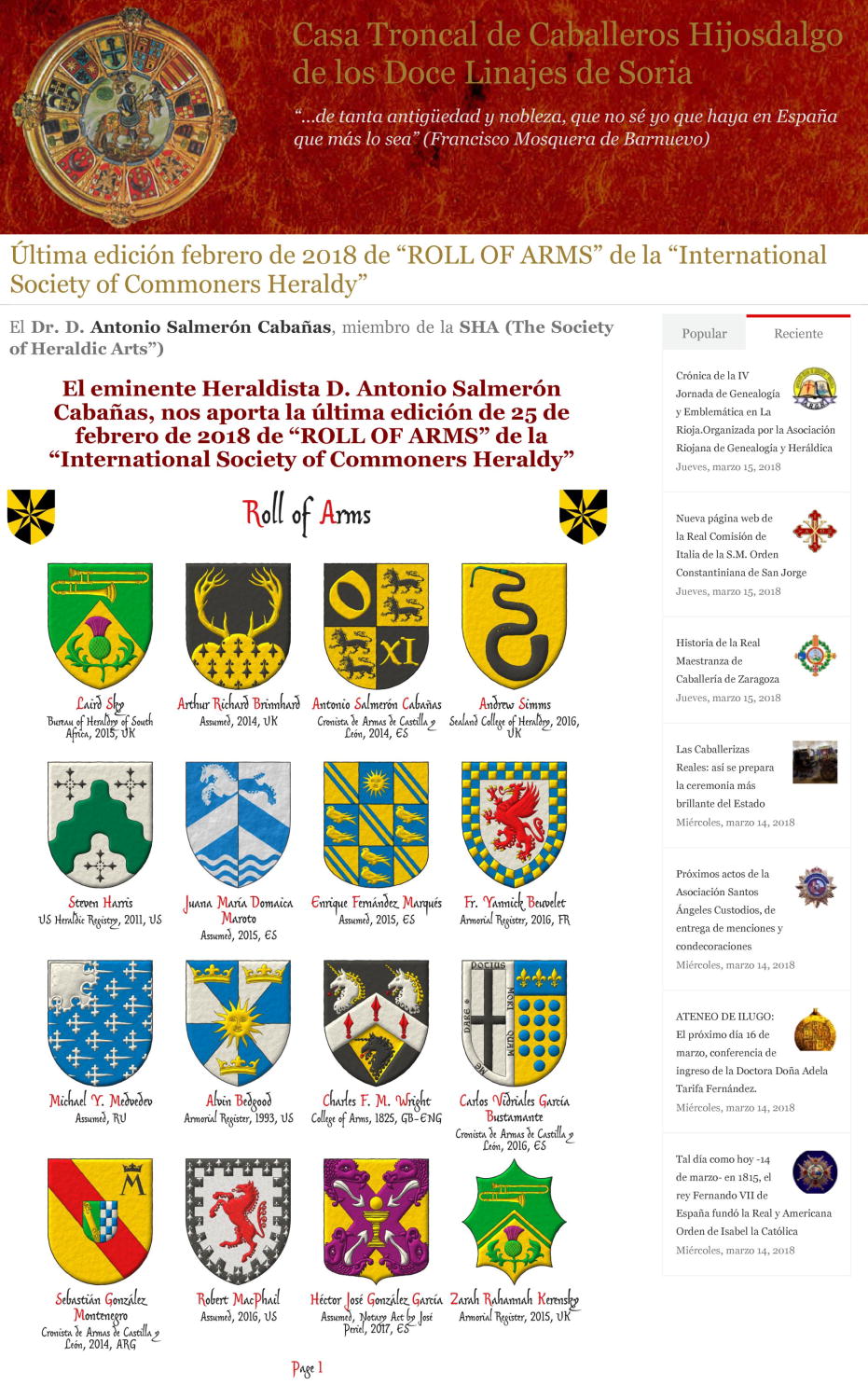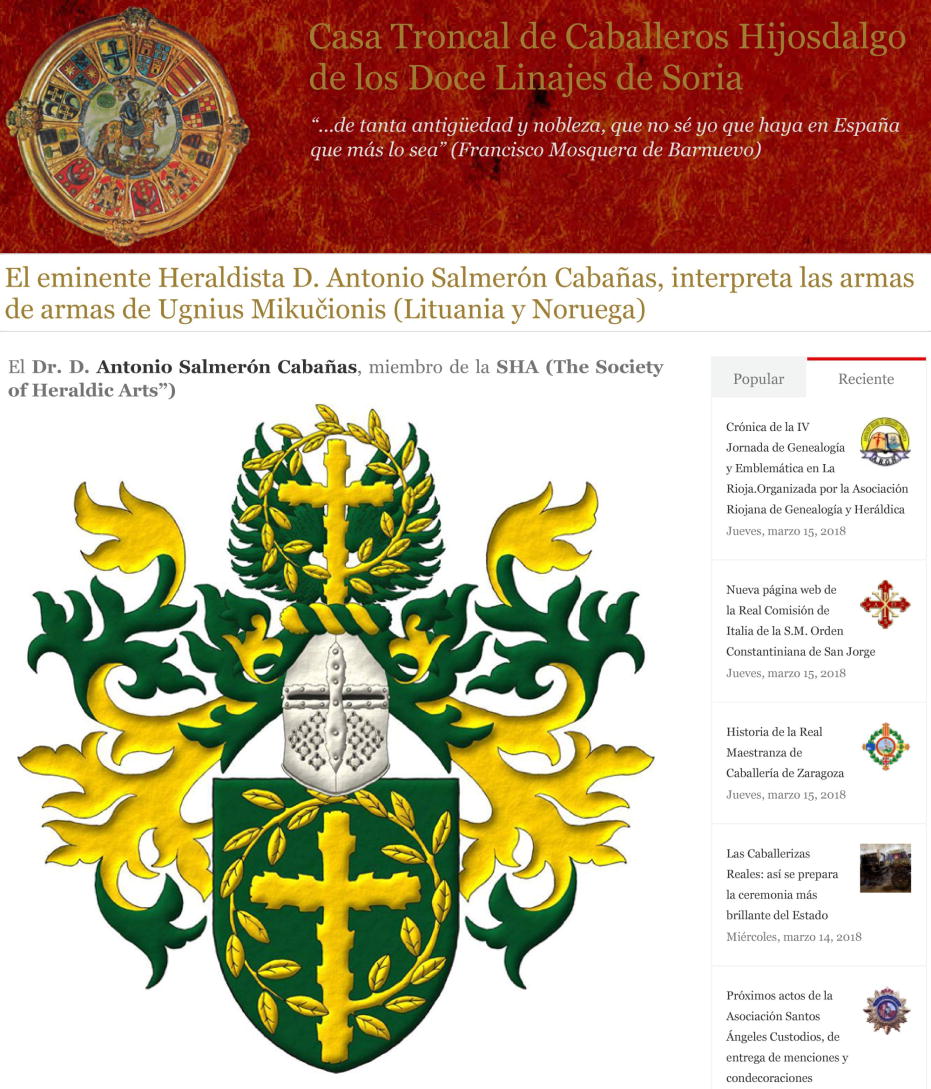
![Ver [Mayer, L. A.; 1933] en referencias bibliográficas. Libro abierto, hojas de plata, filo de oro, guardas de gules, tapas de sable.](../css/Libro.Bibliografia.png)
Mayer, L. A.; 1933
Leo Aryeh Mayer, «Saracenic Heraldry: A Survey», published by the University of Oxford at the Clarendon Press, Oxford, 1933.
The work provides a fully documented armorial roll of Saracenic sultans, princes, and knights, designed to meet the frequently expressed wish of students of Muslim archaeology. It is a fundamental reference work and remains as one of the most authoritative works on this subject.


![Ver [Stodart, R. R.; 1881] en referencias bibliográficas. Libro abierto, hojas de plata, filo de oro, guardas de gules, tapas de sable.](../css/Libro.Bibliografia.png)
Stodart, R. R.; 1881
Robert Riddle Stodart, «Scottish Arms: Being a Collection of Armorial Bearings, A.D. 1370-1678», Reproduced in facsimile from contemporary manuscripts with heraldic and genealogical notes, edited by William Paterson, Edinburgh, 1881.
This work is a comprehensive two-volume set that reproduces armorial bearings from various manuscripts dating from 1370 to 1678. The collection includes detailed heraldic and genealogical notes that accompany the facsimiles. It is an essential reference for anyone studying Scottish heraldry and genealogy.
Volume 1
Volume 1 contains an introduction, an alphabetical index of coats of arms, and 125 color plates, each displaying between 1 and 9 coats of arms per plate. This volume 1 is dedicated to the color illustrations of the coats of arms, while volume 2 consists entirely of text without illustrations. In volume 1, the Plates section with color illustrations of coats of arms follows the same structure as volume 2, as will be seen in the section dedicated to volume 2. The contents of volume 1 are as follows.
- Introduction.
- Index to the plates.
- List of names in the order in which they occur on the plates.
-
Plates:
- Armorial de Gelre, pages A to E.
- Armorial de Berry, pages I to II.
- Forman's Roll, pages 12 to 21.
- Sunderland Hall Ms., pages 22 to 24.
- Additions to Sir David Lindsay's Ms., pages 24^ to 34.
- Workman's Ms, pages 35 to 84.
- Kings' and Nobility's arms, pages 85 and 86.
- Sir David Lindsay the Youngers Ms, pages 87 to 94.
- Sir James Balfour's Ms, pages 95 and 96.
- Lyon register, pages 97 and 98.
- Earl of Crawford's Ms., pages 99 and 100.
- Gentlemen's arms, pages 101 to 106.
- Funeral escutcheons, pages 106 to 110.
- Sundries, pages 111 to 118.
- Heraldic and genealogical notes.
- Index to the notes.
- Additions and corrections.
Volume 2
Volume 2 continues the collection and includes further armorial bearings and notes and also references several historical armorials, with the following contents:
- I. The armorial de Gelre, circa 1369.
- II. The armorial de Gilles le Bouvier, Berry Roi d'Armes, circa 1450-55.
- III. Roll of arms, by sir Robert Forman, Lyon King of Arms, circa 1562.
- IV. Sunderland Hall manuscript.
- V. Additions to the booke and register of armes, compiled by sir David Lindsay, Lyon King of Arms.
- VI. Illuminated heraldic manuscript, called "Workman's," circa 1565-6.
- VII. Kings' and nobility's arms, circa 1566.
- VIII. Illuminated manuscript, circa 1603-5, ascribed to sir David Lindsay, Lyon King of Arms.
- IX. Armorial manuscripts by sir James Balfour, Baronet, Lyon King at Arms 1630-54, and another herald.
- X. The public register of all arms and bearings in Scotland, A.D. 1672-78.
- XI. Heraldic manuscript compiled during the reign of James VI, the property of the Earl of Crawford and Balcarres.
- XII. Gentlemen's arms collected during the reign of Charles I.
- XIII. Funeral escutcheons.
- XIV. Sundries.
Bibliographical reference of century XIX.
Classification: Armorial roll, English language and Black and white with color plates.
The author is Stodart, Robert Riddle.
External resources:
Internal resources: StodartR1881.ScottishArms.Heavy.Volume.01.pdf Heavy PDF, StodartR1881.ScottishArms.Heavy.Volume.02.pdf Heavy PDF, StodartR1881.ScottishArms.Light.Volume.01.pdf Light PDF and StodartR1881.ScottishArms.Light.Volume.02.pdf Light PDF.


Google Plus
I also had a heraldic wall in Google+ the social network created and closed by Google. Google + taught us that we should not put all our efforts into a single social network.
Categories: Technology, Social networks, Tower, Ordered, Or, Port and windows and Azure.


![Ver [Winkler, P. P. von; 1892] en referencias bibliográficas. Libro abierto, hojas de plata, filo de oro, guardas de gules, tapas de sable.](../css/Libro.Bibliografia.png)
Winkler, P. P. von; 1892
Pavel Pavlovich von Winkler, «Russian Heraldry: History and Description of Russian Coats of Arms with Illustrations of All the Coats of Arms of the Nobility, included in the General Armorial of the Russian Empire», printed by Typography and Lithography of I. A. Efron, Prachechny Passage, Building 6, 3 volumes, Volume 1, year 1892, 59 pages, 275 illustrations, includes a preface to the first volume, an index, basics of heraldry, and an armorial, Volume 2, year 1894, 71 pages, 302 illustrations, includes a preface to the second volume, an index, and an armorial, Volume 3, year 1894, 71 pages, 326 illustrations, includes a preface to the third volume, an index, and an armorial, St. Petersburg, 1892, 1894.
Description
This work by Pavel Pavlovich von Winkler is a comprehensive three-volume series on Russian heraldry, exploring the history and detailed descriptions of Russian coats of arms.
The first volume includes an introduction to heraldry, making it accessible to readers new to the subject. Each volume expands on specific aspects of Russian heraldry, providing an analysis and cataloging of various coats of arms throughout Russia's history.
Bibliographical reference of century XIX.
Classification: Armorial roll, Russian language and In black and white.
Author: Winkler, Pavel Pavlovich von.
Internal resources: WinklerPvon1892.Tomo.01 Pdf format, WinklerPvon1894.Tomo.02 Pdf format and WinklerPvon1894.Tomo.03 Pdf format.


Castilian castle
A Castle Or, triple towered, embattled, port and windows Azure, and masoned Sable.
Un castillo de oro, aclarado de azur, mazonado de sable.
Some of the characteristics of the Castilian castle are specified in the coat of arms in English, for example, «triple towered, embattled», but they are omitted in the Spanish blason, because the Spanish blason considered that the Castilian castle can not be otherwise. These local characteristics, that decades ago were not necessary to specify, could begin to have to be in this global and interconnected heraldic world. [Valero de Bernabé, L.; 2009a] describe the different characteristics between the Castilian, the French, and the English castles among others.
Blazon keywords: Castle, Or, Port and windows, Azure, Masoned and Sable.
Style keywords: Freehand.
Classification: Schema.


Which one is the single blazon?
All these blazons are equal two by two, except one blazon without a partner.
Which one is the single blazon?
This is an heraldic riddle based on the arms of Vittorio Gifra, «Paly of six Azure and Or; over all a bend Azure.», painted the very first, row 1 and column 1.
Think before you move the cursor or click on the following link and see the solution.
Categories: Riddle, Semi-circular, Pointed, Triangular curved, Ogee, Rounded, Outlined in sable, Freehand, Paly, Six, Surmounted, Overall (deprecated), Bend, Azure, Vert and Or.
Root: Gifra, Vittorio.


![Ver [ISCH Armorial, February 2018 Edition] en enlaces recomendados. Áncora de oro y la divisa enlace.](../css/Ancora.Enlace.png)
ISCH Armorial, February 2018 Edition
Publication on the blog Twelve Lineages of Soria about the armorial I produced for the ISCH under the title: The eminent heraldist Mr. Antonio Salmerón Cabañas brings us his latest edition of February 25, 2018 of the Roll of Arms of the International Society of Commoners Heraldry ISCH.
This armorial contains coats of arms painted by different heraldic artists, although all those shown in the illustration heading this article were painted by my own hand.
Categories: Link, Gules, Azure, Vert, Sable, Purpure, Or, Argent, Without divisions, Gyronny, Party per pale, Quarterly, Bend, Saltire, Bordure, Chevron, Cross, Pile, Bendlet, Inescutcheon, Chequey, Hurt, torteau, pellet, pomme and golpe, Cadency, Thistle, Fleur de lis, Horse, Crown, Sun in splendour, Martlet, Wolf, Letter, Unicorn, Griffin, Dragon's head and Engouled.
Root: Twelve Lineages of Soria.


![Ver [Coat of Arms of Ugnius Mikucionis in Twelve Lineages] en enlaces recomendados. Áncora de oro y la divisa enlace.](../css/Ancora.Enlace.png)
Coat of Arms of Ugnius Mikucionis in Twelve Lineages
Publication of my interpretation of the arms of Ugnius Mikucionis, on the blog Twelve Lineages of Soria with the article titled: The eminent heraldist Mr. Antonio Salmerón Cabañas interprets the coat of arms of Ugnius Mikucionis (Lithuania and Norway).
Blazon in Spanish by Alfonso de Ceballos-Escalera y Gila, Chronicler of Arms of Castile and León, from his certification of arms: «Vert, a Latin cross made of a wooden staff, raguly, from whose sinister flank issues a leafy branch that encircles the cross from above and entwines over its base, all Or. Crested with a steel helmet affronty, torse Or and Vert, with mantling Vert doubled Or. For crest, the same raguly Latin cross, branched and leafed, Or, placed before two wings Vert».
Blazon in English by The South African Bureau of Heraldry, from its certification of arms: «Vert, a wooden staff, its upper end terminating in a Latin cross, raguly, couped at random, issuant from its sinister nombril point a leaved offshoot encircling the cross, its end terminating and debruising the lower limb Or. Crest: In front of a pair of wings displayed Vert, a wooden staff issuant, its upper end terminating in a Latin cross, raguly, couped at random, issuant from its sinister nombril point a leaved offshoot encircling the cross, its end terminating and debruising the lower limb Or. Wreath and mantling: Vert and Or». I do not agree with the specification of the exact place of origin of the branch, the «nombril point» ~ «navel», because that point of origin does not distinguish this coat of arms from another where the branch could emerge at a different height, either closer or further from the point of the shield, and because it forces the artistic interpretation to either break the rule of fullness or to draw a curved branch in a panache shape to allow it to open before gaining height.
Note how in the Spanish certification of arms, by the Chronicler of Arms of Castile and León, this unnecessary nombril specification as the origin point of the branch is omitted.
The nombril is the exact crossing point of the vertical axis of symmetry of the shield with the lower edge of the bend.
Categories: Link, Vert, One, Cross, Raguly, Sinister, Or, Helm, Wreath, Mantling, Crest, Two, Wing and At the nombril.
Root: Twelve Lineages of Soria.

Continue with: Marquess of Casa Portocarrero in Twelve Lineages.
-
Language
-
Categories of heraldry
-
Divisions of the field
- Without divisions
- Party per pale
- Party per fess
- Party per bend
- Party per bend sinister
- Tierce
- Tierce sinister
- Tierced per pale
- Tierced per fess
- Tierced per bend
- Tierced pallwise inverted
- Quarterly
- Quarterly per saltire
- Gyronny
- Party per fess, the chief per pale
- Party per pale, the sinister per fess
- Party per fess, the base per pale
- Party per pale, the dexter per fess
- Chapé
- Chaussé
- Embrassé
- Contre-embrassé
- Party per chevron
- Enté
- Enté en point
- Flanched
-
Metals
-
Colours
-
Furs
-
Other tinctures
-
Ordinaries and sub-ordinaries
-
Diminutives of the ordinaries
-
Other charges
-
Charges from Nature
Water, Eagle, Bald eagle, Eagle claw, Dorsal fin, Tail fin, Two hands clasped, Lark, Tree, Trunk, Rainbow, Atom, Barbel, Acorn, Bighorn sheep, Arm, Owl, Vulture, Horse, Head, Goat, Camellia, Thistle, Merino ram, Kapok tree, Stag, Doe, Crescent, Increscent, Chrysanthemum, Tail, Tail addorsed, Ermine spot, Hummingbird, Snowflake, Heart, Roe deer, Neck, Stags' attires, Roe deers' attires, Raven, Dolphin, Diamond, Tooth, Elephant, Beetle, Emerald, Starling, Mullet, Mullet of four points, Star of David, Estoile, Male figure, Fleur de lis, Flower, Cornflower, Dogwood flower, Lotus flower, Hop cone, Bluebonnet, Puffin, Ash, Rooster, Claw, Talon, Goose, Heron, Seagull, Pomegranate, Sunflower, Swallow-tail, Falcon, Leaf, Boar, Goldfinch, Laurel, Barn owl, Lion, Lioness, Lion passant, Leopard, Lion rampant guardant, Lynx, Lily, Madonna lily, Flame, Wolf, She-wolf, Parrot, Moon, Hand, Apple, Apple tree, Sea, Martlet, Wing, Two wings in vol, Covert, Blackbird, Mount, Trimount, Fly, Wrist, Elm, Olive tree, Orbital, Bear, Palm frond, Palm tree, Dove, Poplar leaf, Panther, Jaguar, Vine, Paw, Forepaw, Foot (palmiped), Foreleg, Peacock, Chest, Pelican, Pelican in her piety, Dog, Brach hound, Warren hound, Fish, Hoof, Beak, Quill, Cinquefoil, Quetzal, Branch, Sprig, Frog, Shamrock, Caboshed, Oak, Holm oak, Rose, Double rose, Savage, Serpent, Plough of Ursa Major, Sun, Sun in splendour, Ray of the sun, Lightning flash, River, Stem, Badger, Tyger, Linden, Wheat, Wheat spike, Bull, Tulip, Udder, Escallop and Fox.
-
Artificial charges
Halberd, Plough share, Ace of spades, Anchor, Cyclamor, Torch, Bow, Arch, Harp, Non-classic artifact, Winnowing fan, Crozier, Conductor's baton, Pair of scales, Ship, Oar, Sail, Norman ship, Beret, Grenade, Ecclesiastical cap, Arm vambraced, Knight, Chain, Cup, Covered cup, Monstrance, Bell, Bell tower, Cannon dismounted, Carbuncle, Castle, Ribbon, Clarion, Nail, Crucible, Cord, Dagger, Key ward, Turret, With a turret, Armillary sphere, Sword, Federschwert, Sabre, Parchment, Scroll, Arrow, Club, Garb, Sheaf of tobacco, Scythe, Gauntlet, Axe, Buckle, Galician granary, Host, Bonfire, Polish winged hussar, Church, Fanon, Oil lamp, Spear, Spear's head, Fleam, Letter, Book, Open book, Closed book, Bookmark, Page, Line, Lantern, Key, Four crescents joined millsailwise, Hammer, Two-handed sword, Menorah, Mortar, Pestle, Number, Knot, Celtic Trinity knot, Water-bouget, Comb, Piano, Millstone, Millrind, Millwheel, Clay pot, Potent, Bridge, Cuffed, Hourglass, Chess rooks, Compass rose, Rosette of acanthus leaves, Mullet of six points pierced, Broken, Portcullis, Wheel, Wagon-wheel, Symbol, Sackbut, Drum, Geometric solid, Tetrahedron, Tower, Trident, Trumpet, Double vajra and Anvil.
-
Immaterial charges
Angel, Archangel, Basilisk, Heart enflamed, Sacred Heart of Jesus, Paschal lamb, Dragon's head, Dragon, Wyvern, Phoenix, Garuda, Griffin, Sea-griffin, Winged hand, Our Lady of Mercy, Pegasus, Saint George, Mermaid, Trinity, Triton, Golden fleece, Unicorn and Ouroboros.
-
External elements
-
Heraldic creations
-
References
-
Formats
-
Keywords on this page
Riddle, Port and windows, Chequey, Winged, Pointed, Armorial roll, Azure, Bend, Bibliography, Bordure, Cadency, Surmounted, Wreath, Horse, Chevron, Thistle, Castle, Crest, Compony, Ogee, Crown, Bendlet, Cross, Quarterly, Outlined in sable, Two, Dragon's head, Dragon, Raguly, In black and white, Black and white with color plates, At the nombril, Engouled, Link, Inescutcheon, Schema, Fleur de lis, Gifra, Vittorio, Google Plus, Griffin, Gules, English language, Or, Argent, Sable, Century XIX, Vert, Freehand and Twelve Lineages of Soria.
